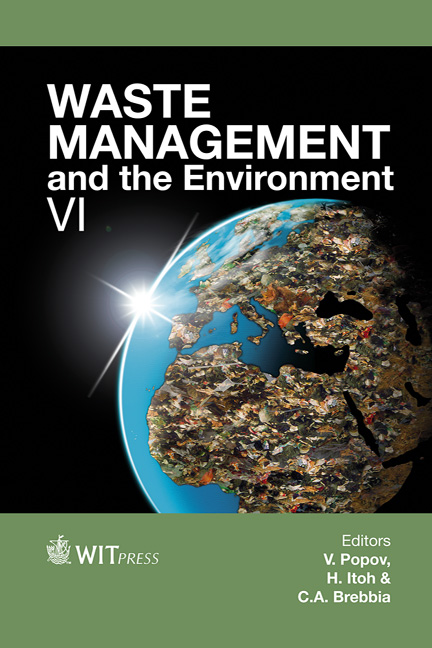Waste Gasification In An Up-draft Fixed-bed Gasifier: Experimental Study And Model Validation
Price
Free (open access)
Transaction
Volume
163
Pages
10
Page Range
113 - 122
Published
2012
Size
626 kb
Paper DOI
10.2495/WM120111
Copyright
WIT Press
Author(s)
N. Verdone, P. De Filippis, M. Scarsella & B. de Caprariis
Abstract
Gasification has been identified as a key technology to enhance the environmental tolerability of low quality fuels such as waste and biomass. In this work the performances of a laboratory scale gasification process fed with waste are reported. Among the several technical choices, we selected the up-draft fixed-bed gasifier as an interesting solution for heat generation in small-scale applications, due to the characteristics of simple geometry and low cost. The experimental setup is composed by an up-draft gasifier followed by a reactor used as filter to remove the particulate and as second thermal and catalytic stage to convert the produced tar in lighter species. A literature model has been adapted to the case under study to analyse the influence of operative parameters such as oxidant flow rate (equivalent and air/steam ratio values) and gasification temperature of the process. The original literature model considers the species gas evolution along the axial coordinate only, and does not include time dependency. To make the model time dependent, the consumption time of the gasification fuel bed estimated from experimental tests was introduced. Since the oxidation zone is below the gasification one, the initial species concentrations were set as the species concentrations produced at the end of the oxidation zone, calculated with an atom mass balance considering a complete char combustion. Since the model concerns only the gasification, the up-draft process was split into two consecutive steps to allow direct comparison between experimental and simulated data: first the drying and pyrolysis processes and then the fixed bed gasification. The model was successfully validated with experimental data and then it was used to predict the operative parameters that determine the optimal syngas composition. The best syngas composition (35%
Keywords
auto fluff, disposal, gasification, energy recovery





